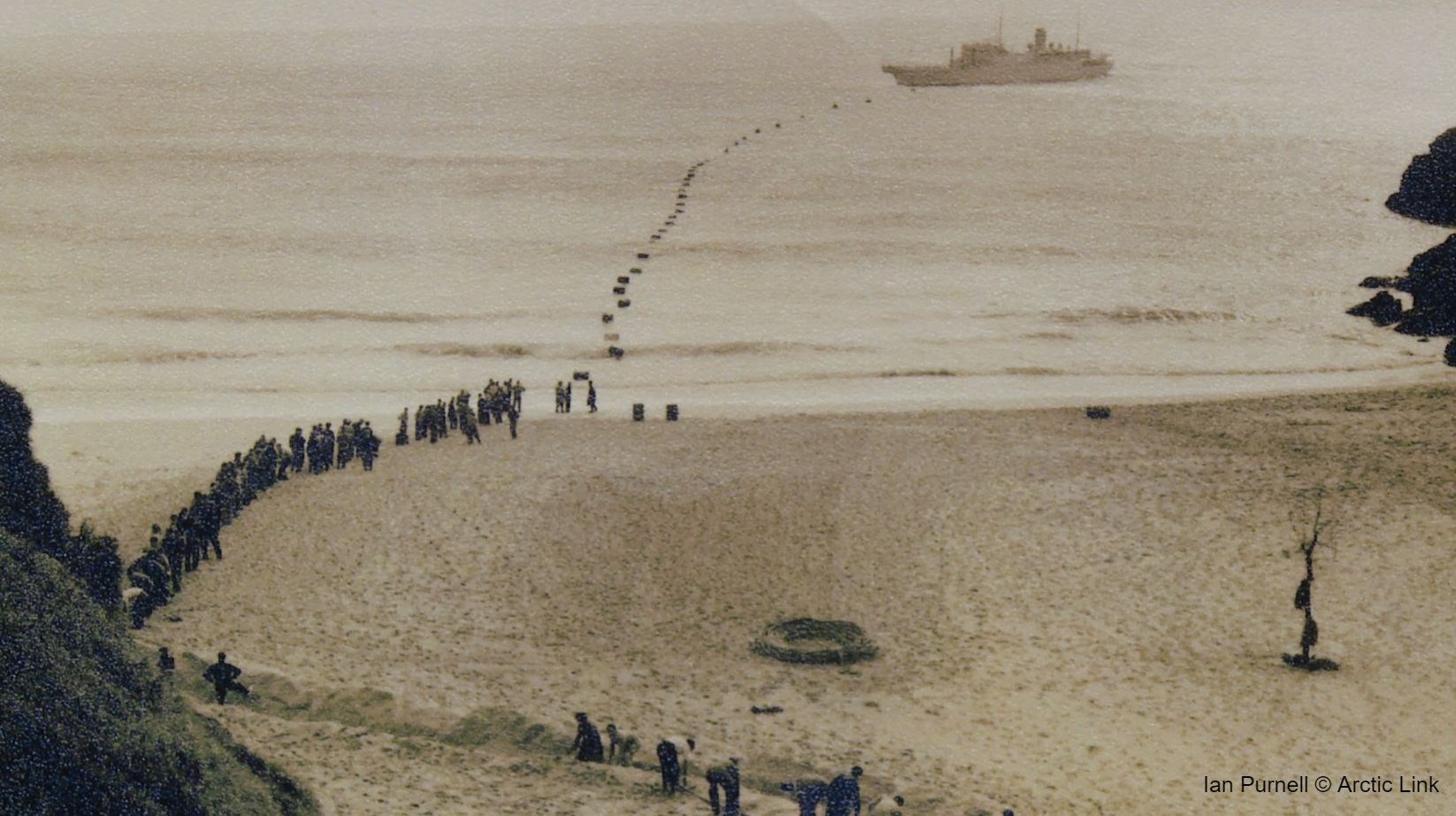Director & Editor Ian Purnell on Filmmaking About Climate Change.

In 2020, Ian Purnell was a member of our Doc Station with his hybrid documentary and visual essay Arctic Link, which follows the future geography of the internet. In support of this work he was awarded the Kompagnon Fellowship, a collaboration by Berlinale Talents and Perspektives Deutsches Kino to support directors or screenwriters living and working in Germany in the development of their current film project.
Nutsa Sitchinava caught up with the director and editor to talk about his work and storytelling about climate change.

How did you become a filmmaker and how did climate change become a pressing subject for you?
When I was twelve years old I made a short film (starring myself and my cat) about a creature named Frosti who had been stuck frozen in an Arctic glacier for thousands of years. After being freed by the melting polar ice Frosti becomes a kind of spokesperson of climate change, touring the world and giving out warnings. So apparently some of my first experimentations on the VHS-camera were connected to the topic climate change. It was just a few years later that I understood the impact climate change has on me as a human and I came to realise that the world is already changing, in a truly frightening way.
How has the Kompagnon Fellowship helped you develop your upcoming documentary and visual essay Arctic Link?
Unfortunately, my planned shoots were cancelled last year due to the pandemic, which meant that the 2020 fellowship allowed me to focus on continuing and expanding my research. It made it possible to involve important collaborators in the development for my film, and being able to pay contributors has made a big difference. It gave me the freedom to plan dedicated time for the project and be ready and well prepared once filming is possible again.
What are the biggest challenges while making film about climate change?
In a film it’s possible to show multiple perspectives, stories and phenomenon around one complex theme, enabling the creation of cross-connections, both associative and intellectual through time and space. As climate change is such a globally interlinked issue, multi-perspective ways of storytelling can be a helpful tool to create a better understanding of its causes and full dimension.
Cinema can transmit the striking beauty of nature as well as the dystopic human-made impacts we are surrounded by on earth. I often find myself working with these contrasting opposites and the sensations attached to them as tools for a dramaturgical film structure.
Activist documentary on climate change is a rapidly expanding genre at the moment. What drew you to this topic and made you want to contribute your own work to it?
When I recall the films that have had the most impact on me as a viewer, they were always the ones that opened up spaces of reflection in which I felt free to observe, discover, compare and make connections myself. I think, only once I get this freedom I truly get sensitised for a topic. Also, the medium of cinema allows the creation of an experience for all senses which does not always follow a rational logic.
Activist documentaries and more direct, didactic audio-visual content are obviously crucial to inform and raise awareness, while those might not always require the cinema space for an audience to connect.
From your experience, what are some ways filmmakers can make their productions less taxing on the environment?
From my experience in the editing room I like the idea of reduction and recycling of footage, as I am often confronted with many hours of material that will never see the light of day. During the shooting process, I generally like to keep questioning if all the planned shots, travels and scenes are really necessary, or if existing visual and audio material or even archive footage might transmit what I am looking for in a much better way.
To find out more about Ian's work, visit his website